
In a world bursting with innovation and interconnectedness, overlook the pressing challenges that persistently shadow our global community. From climate change to social inequality, these issues not only pose significant threats to our future but also offer opportunities for transformative solutions that could reshape lives and societies. Imagine a scenario where we harness technology, creativity, and collaboration to tackle these monumental hurdles head-on—what if the key to a sustainable future lies in our collective willingness to act? on there, we delve into the top 10 world problems that demand urgent attention and present actionable solutions that can pave the way for progress. Each issue is not merely an insurmountable obstacle but rather a call to action for individuals, communities, and nations alike. By examining these critical challenges through a lens of possibility rather than despair, we aim to inspire hope and ignite a sense of responsibility in tackling the world’s most pressing dilemmas together. Join us as we explore how awareness can breed action—and how each of us can contribute toward creating a brighter tomorrow.



In 2022 – 2023, the war in Ukraine, the Israel – Hamas conflict, the energy crisis and hyperinflation caused multiple economic shocks and stagnation across the continents.
As a platform to address global issues that cannot be resolved by any single country, the United Nations organization is spearheading humanity’s struggle to survive. Its most visible efforts concern resolving conflicts and undertaking peacekeeping activities. Below is a list of the world’s greatest according to the UN.
Climate Change: Mitigation Strategies and Innovations

The changing climate is not merely an environmental issue; it is reshaping economies, altering social dynamics, and redefining our relationship with technology. Sustainable innovation has become a cornerstone of modern business strategies, with organizations rethinking production processes and supply chains to minimize their carbon footprints. Start-ups harnessing renewable energy technologies are emerging in response to traditional industries facing mounting pressure to adapt or face obsolescence. In many ways, the fight against climate change serves as a catalyst for creativity, pushing entrepreneurs to seek solutions that were previously unimagined.Moreover, the narrative around climate change often overlooks its profound impact on human migration patterns.
One of the major problems on our planet is linked to global temperatures that are continually rising. By 2100, studies show that there is a 50% likelihood of facing global warming that is higher than 3.5 degrees Celsius and a 10% probability of witnessing warming higher than 4.7 degrees Celsius relative to temperatures registered between 1850 and 1900. This would result in more severe shifts in weather patterns, food and resource shortages, and the more rapid spread of diseases.
possible solution:
A reduction in greenhouse gas emissions and increased awareness of the necessity to turn green are among the solutions that can make a significant difference. In addition, strategies to cut carbon emissions and opting for replanting are among the effective ways to address climate change.
Water Scarcity: Sustainable Management Practices

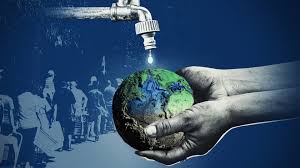

Water scarcity isn’t just a looming crisis; it’s an existential challenge that transcends geographical boundaries and socioeconomic statuses. As we navigate the 21st century, more than two billion people live in countries experiencing high water stress, a situation exacerbated by factors such as climate change, population growth, and rampant urbanization. However, the narrative around water scarcity often neglects the fascinating innovations rising to meet this challenge. From decentralized desalination technologies harnessing renewable energy to advanced rainwater harvesting systems in urban areas, there is a burgeoning wave of solutions aimed at sustainable water management.
Possible solutions to the water pollution issue:
The most efficient technique to reduce water pollution is to treat water (filtration, disinfection, etc.) before it reaches the waterway system. Clearing wastewater of pollutants can be performed via biological, physical, and chemical operations.
Poverty Alleviation: Empowerment Through Education


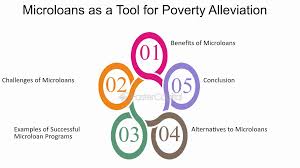
Education serves as a powerful catalyst for poverty alleviation, transforming lives and communities. By equipping individuals with essential skills and knowledge, education paves the way for better employment opportunities and economic mobility. When children from impoverished backgrounds gain access to quality education, they not only break the cycle of poverty but also inspire future generations to pursue learning as a path to empowerment. This ripple effect amplifies over time, fostering a society that values knowledge and innovation.
Currently, about 700 million people worldwide face extreme poverty, meaning that their daily income is less than the $2.15 poverty-line established by the World Bank. The majority of these individuals reside in sub-Saharan Africa. All in all, the places where it is most difficult to tackle extreme poverty are rural areas and regions impacted by conflicts. It’s worth mentioning that 50% of the people who live in extreme poverty are children.
Possible solutions to poverty:
- End marginalization by ensuring equality and representation for all
- Provide preventative education and treatment assistance during an epidemic
- Offer recovery interventions during climate disasters
- Help refugees and internally displaced people in terms of health, nutrition, and shelter
- Improve education
- Increase the level of food security and clean water access
- Put an end to conflicts
Children’s poor access to healthcare, education and safety

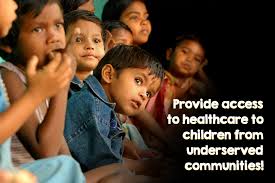

In many parts of the world, children’s access to essential services like healthcare, education, and safety remains alarmingly inadequate. This deprivation not only stunts their individual growth but also hinders societal progress. For instance, when a child lacks proper medical care, preventable diseases can flourish, leading to long-term health issues that impede educational pursuits and productivity in later life. Such cycles of disadvantage perpetuate poverty and inequality, creating a chasm between privileged youth with opportunities and those left behind.
Over 72 million children around the world who are old enough to attend elementary school are not enrolled. Marginalization and poverty are two major social issues.
Possible solutions to protect children’s rights:
- Encourage education for both children and adults in less developed countries
- Provide clean water
- Ensure basic healthcare
- Tackle gender inequality
- Improve childhood nutrition
Inequality: Promoting Social Justice Initiatives



Inequality, both social and economic, has emerged as a critical barrier to sustainable development, often perpetuating cycles of poverty and disenfranchisement. Addressing these disparities through innovative social justice initiatives is essential for forging more equitable societies. One effective approach lies in the incorporation of community-driven solutions that not only empower marginalized voices but also recognize the unique cultural contexts within which they operate. By engaging local stakeholders in decision-making processes, initiatives can be tailored to meet specific needs while fostering ownership and commitment.
Indeed, the problems in today’s society are linked with the constant violation of human rights – gender inequality, human trafficking, the lack of freedom of speech – all of these can be witnessed in the 21st century in every country, even in developed nations.
Gender Equality
50% of the world’s population are women and girls. Gender equality is not only a crucial human right, it is also necessary for a peaceful society, the full development of human potential, and long-term evolution.
Possible solutions to gender inequality:
- Speak up for what you believe in
- Pay attention to what others have to say
- Defend yourself from discrimination
- Raise public awareness of a problem
- Get the media to talk about it
- Demonstrate to those in positions of power that they are being watched
Food Security: Sustainable Agriculture Approaches



Sustainable agriculture is at the heart of addressing global food security, and innovative ecological practices are redefining our approach to farming. Traditional methods often focus on maximizing yield without considering long-term environmental impacts, but emerging techniques—like agroecology and permaculture—prioritize biodiversity and soil health. By integrating crop rotation, polyculture, and organic pest management, these approaches enhance resilience against climate change while ensuring that farming can continue to thrive well into the future.
technology plays a pivotal role in reshaping agricultural practices toward sustainability. Precision farming harnesses data analytics to optimize resource use, such as water and fertilizers, thereby reducing waste while increasing productivity. Similarly, vertical farming initiatives are transforming urban landscapes by enabling food production within city limits; this not only shortens supply chains but also reduces carbon footprints associated with transportation. Emphasizing localization not only addresses food security challenges but also fosters community engagement in building resilient agricultural ecosystems.
Possible solutions:
- In regions impacted by conflict, humanitarian, development, and peacebuilding initiatives should be rolled out quickly
- The resilience of those who are more prone to economic hardship should be increased
- To reduce the cost of nutritious foods, governments should intervene at various points in the food supply chain
- Deal with poverty by focusing on interventions that help those suffering
- Food environments should be reinforced. In addition, it is important to influence consumer behavior to encourage eating habits that are good for both people and the environment.
- Experts believe that the immediate solution to the food crisis linked to the conflict in Ukraine could be monetary, mainly because of the rising food prices. If governments and donors are able to help people to pay for food, fewer will go hungry.
Health Crises: Strengthening Healthcare Systems Worldwide

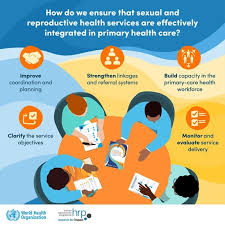

There is no comprehensive list of the top global health challenges because this field is dynamic and ever-evolving. In addition, new threats and hazards related to global health are constantly emerging as seen by the monkeypox outbreak that occurred in 2023. On the other hand, certain global health problems are long-term and may be on the list forever including cancer, air pollution, and tuberculosis.
Major health problems in the world include:
- Communicable diseases
- Environmental factors.
- Inequalities and poor healthcare access
- Political aspects
- Mental health
- Noncommunicable diseases (NDCs)
Possible solutions to global health issues:
- Empower marginalized populations
- Encourage physicians to work in rural regions
- Implement policies that eliminate obstacles and improve access to healthcare
- Promote health breakthroughs (improve research, increase funding)
- Education can help people recognize and improve lifestyle variables such as poor diets, obesity, cigarette use, and alcohol intake which can lead to NCDs.
- Veterinary medicine can enhance global health since diseases originating from livestock play an important role in the spreading of diseases.
Pollution Control: Innovative Technologies for Clean Air
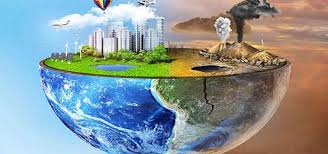

Recent advancements in pollution control technologies are transforming the landscape of air quality management, making it feasible to envision cities with markedly cleaner air. One innovative approach is the use of biofiltration systems that leverage natural processes, utilizing living organisms like bacteria and plants to break down airborne pollutants. These systems not only help detoxify the urban atmosphere but also blend seamlessly into green spaces, promoting biodiversity while enhancing aesthetic value.
solution:
In the relentless fight against air pollution, innovative technologies are reshaping our approach to achieving cleaner air. One groundbreaking solution is the development of advanced air filtration systems, such as bio-filters that utilize specific types of plants and microorganisms to naturally cleanse the atmosphere. These systems not only enhance indoor air quality but also actively reduce harmful particulate matter and volatile organic compounds in urban environments, thereby fostering healthier living spaces.
Conflict Resolution: Peacebuilding and Diplomacy Efforts


Today, among the greatest world issues, wars and conflicts are at the top of the list. 2022 and 2023 were marked by a number of conflicts that led to many casualties and displaced people. The conflicts in Ukraine and Palestine in particular have led to a massive number of people fleeing or attempting to flee their countries in search of shelter.
Individuals with disabilities and the elderly are the most vulnerable because they may not be able to escape high-risk regions.
As of May 2023, there were around 5.1 million internally displaced persons in Ukraine and the number of documented refugees from Ukraine was over 6.2 million worldwide. Around 90% of those escaping the crisis were women and children.
In Gaza, there are approximately 1.4 million internally displaced people with around 690,000 being housed in 150 shelters run by the UN agency for Palestine refugees.
Refugee statistics:
- In mid-2023, according to the UN, there were 110 million forcibly displaced people in the world
- 43.3 million (around 40%) of these were children
- 1.9 million children were born as refugees
- 36.4 million (over 30%) of all displaced people were refugees
- 6.1 million were asylum-seekers
- 4.4 million stateless people reside in 97 countries although it has been estimated that the true figure is much higher
- Over 50% of refugees come from just three countries: the Syrian Arab Republic, Afghanistan, and Ukraine
conclusion
In conclusion, the world’s most pressing problems—such as climate change, poverty, and inequality—demand our immediate attention and collective action. While these issues may seem overwhelming, innovative solutions and collaborative efforts can lead us toward a more sustainable and equitable future. By investing in education, embracing technological advancements, and fostering international cooperation, we can address these challenges effectively. Each individual has a role to play in this global movement for change, whether through advocacy, sustainable choices, or community involvement. Let us unite our efforts and commit to being part of the solution for a better world.
FAQS
1. What are some major global problems facing humanity today?
Major global problems include climate change, poverty, inequality, access to education and healthcare, environmental degradation, political instability, and conflicts.
2. How can individuals contribute to solving world problems?
Individuals can contribute by raising awareness, volunteering for local organizations, adopting sustainable practices, advocating for policy changes, and supporting ethical businesses.
3. What role do governments play in addressing world issues?
Governments are essential in creating policies that promote social justice, economic stability, environmental protection, and international cooperation to tackle global challenges.
4. Are there successful examples of solutions to world problems?
Yes! Successful examples include the Paris Agreement on climate change, the eradication of smallpox through vaccination programs, and initiatives like microfinancing that help lift people out of poverty.
5. How does technology help solve global challenges?
Technology aids in solving global issues by improving communication (e.g., social media activism), enabling data analysis for informed decision-making (e.g., climate modeling), and providing innovative solutions (e.g., renewable energy sources).
6. What can businesses do to be part of the solution?
Businesses can adopt corporate social responsibility (CSR) practices by reducing their carbon footprint, ensuring fair labor practices, engaging in community development projects, and investing in sustainable technologies.
7. Why is education important in solving world problems?
Education empowers individuals with knowledge and skills needed to make informed decisions. It promotes critical thinking and fosters innovation which is crucial for developing effective solutions to complex issues.
8. How can international cooperation improve efforts to solve global issues?
International cooperation allows countries to share resources, knowledge, and best practices. Collaborative efforts lead to comprehensive strategies that address cross-border challenges effectively through treaties and partnerships.

